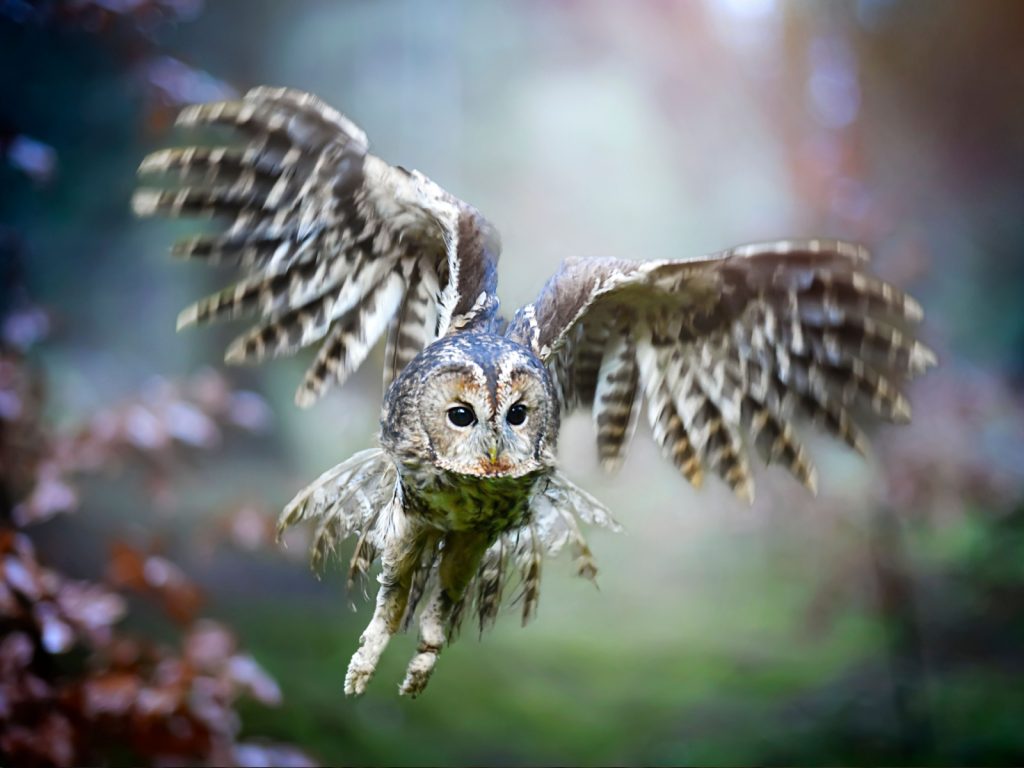The skies of Britain are home to an impressive array of raptors, from soaring eagles to swift falcons. These birds of prey are nature’s perfect hunters, equipped with razor-sharp talons, hooked beaks, and keen eyesight. While some are year-round residents, others are seasonal visitors. Whether you’re an avid birdwatcher or simply enjoy the occasional glimpse of wildlife, learning about these fierce predators can deepen your appreciation for the natural world around us. I’m incredibly fortunate to live in a rural area where I get to watch all kinds of raptors on the hunt in the skies around me. Here are 15 of Britain’s most formidable birds of prey, each with its own unique hunting style and characteristics.
Golden Eagle
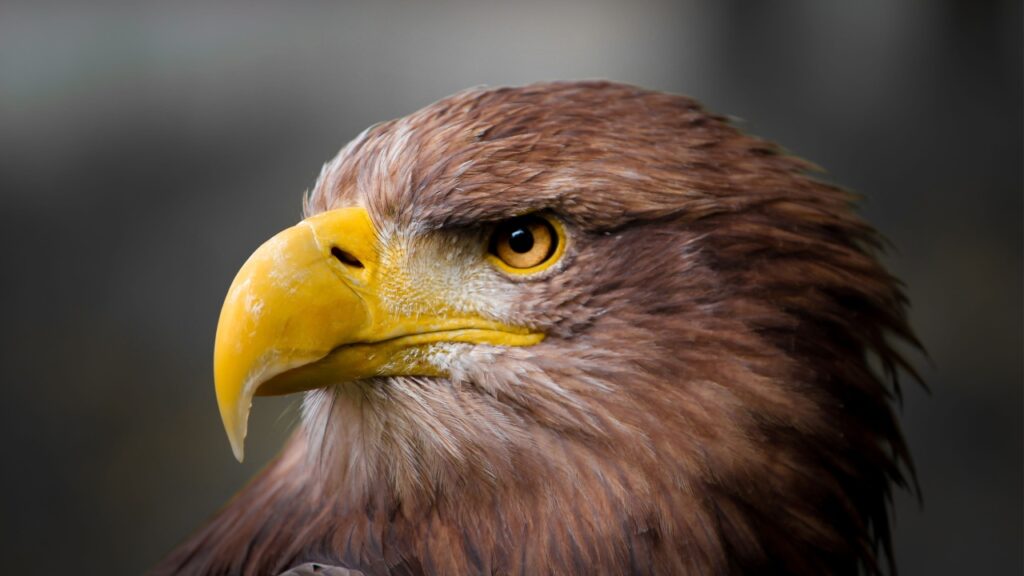
The golden eagle is one of Britain’s largest and most impressive birds of prey. With a wingspan of up to 2.2 metres, it’s a majestic sight soaring over Scottish mountains and moorlands. These powerful hunters can take down animals as large as foxes and young deer, using their sharp talons to snatch prey from the ground. Golden eagles have excellent eyesight, capable of spotting potential prey from over a mile away.
Peregrine Falcon
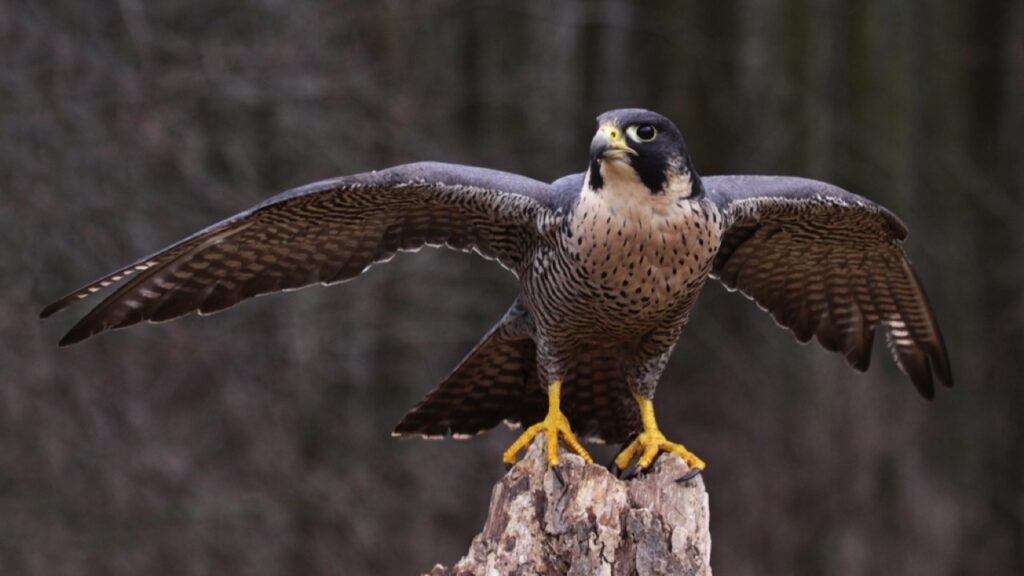
Known as the fastest animal on Earth, the peregrine falcon can reach speeds of over 240 mph during its hunting stoop. These sleek raptors are found across Britain, from coastal cliffs to city skyscrapers. Peregrines primarily hunt other birds, striking them mid-air with their powerful talons. Their population has recovered significantly since the ban on DDT, with over 1,700 breeding pairs now found in the UK.
Red Kite
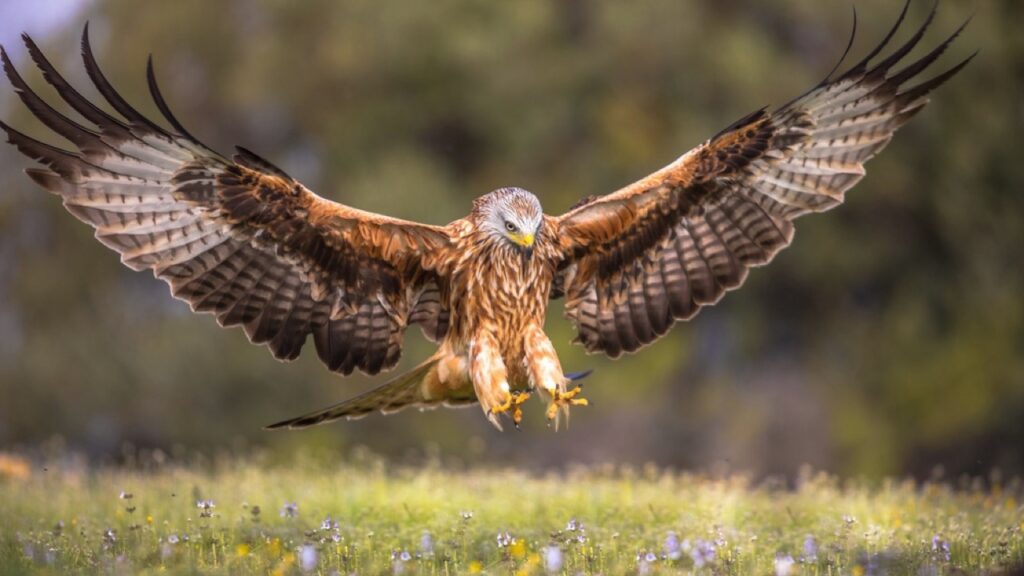
Once nearly extinct in Britain, the red kite has made a remarkable comeback. These graceful birds are easily recognised by their forked tail and reddish-brown plumage. While they’re skilled hunters, red kites are also opportunistic scavengers, often seen soaring over motorways in search of roadkill. Their reintroduction is considered one of the most successful conservation projects in British history.
Sparrowhawk

The sparrowhawk is a small but fierce predator, specialising in hunting songbirds. Males are significantly smaller than females, allowing the species to target a wider range of prey sizes. These agile hunters are known for their ability to manoeuvre through dense woodland at high speeds. Sparrowhawks have adapted well to urban environments and can often be spotted in gardens and parks.
Barn Owl
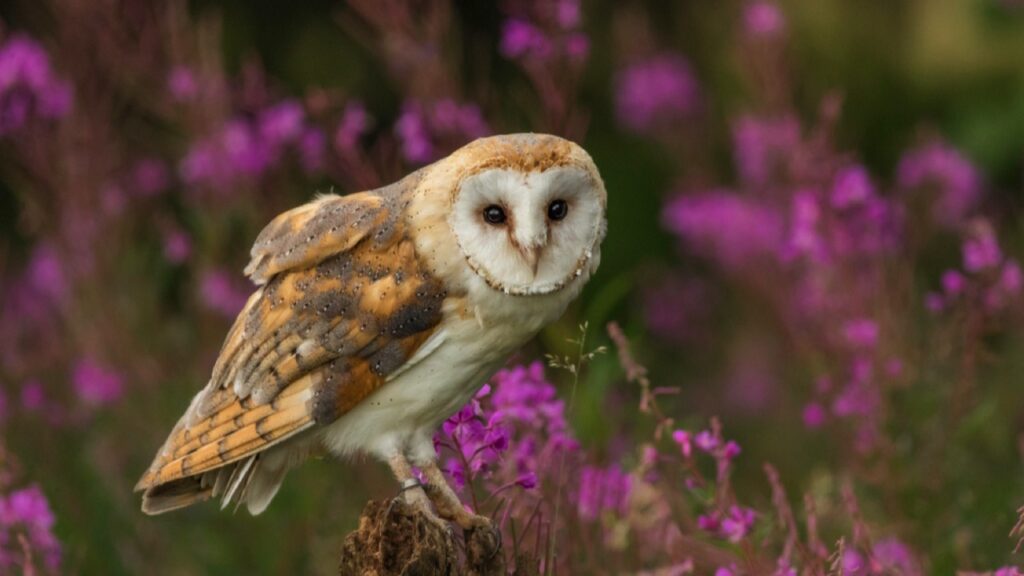
With its heart-shaped face and ghostly white plumage, the barn owl is one of Britain’s most distinctive birds of prey. These silent nocturnal hunters rely on their exceptional hearing to locate small mammals in total darkness. Barn owls are often seen quartering fields and grasslands at dusk. They can consume up to 1,000 small mammals each year, making them valuable allies for farmers in controlling rodent populations.
Buzzard
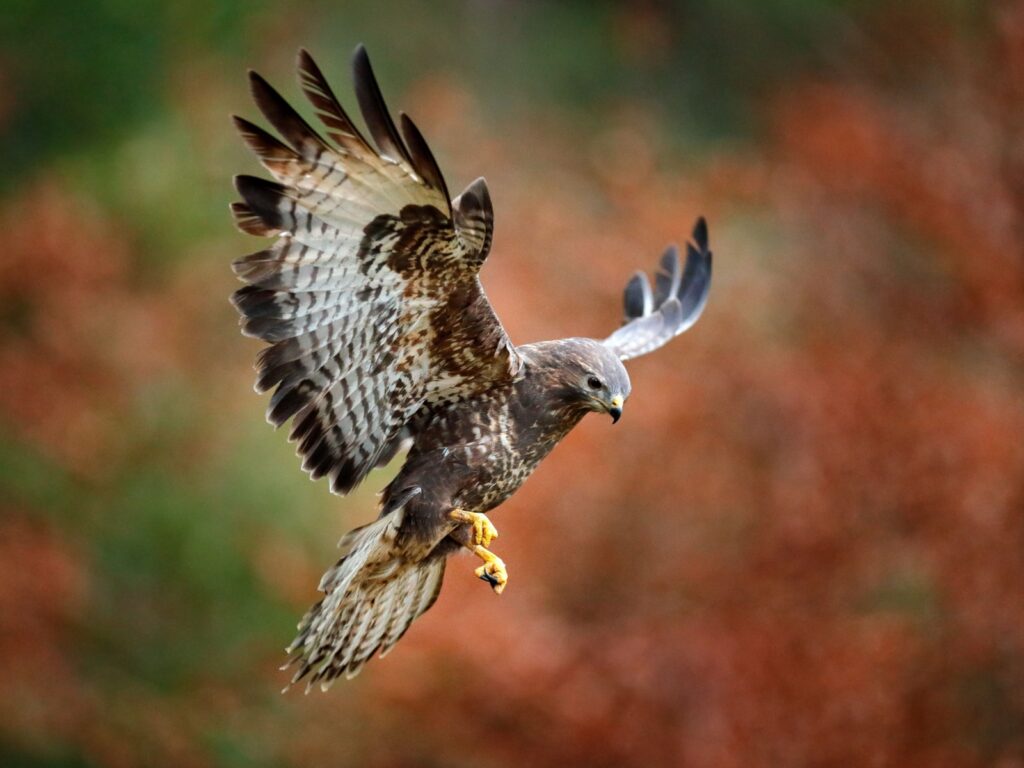
The common buzzard is the most widespread bird of prey in Britain. These adaptable raptors can be found in a variety of habitats, from woodlands to urban areas. Buzzards are often seen soaring in circles on thermal currents, scanning the ground for small mammals, birds, and reptiles. Their numbers have increased dramatically in recent decades, partly due to reduced persecution and the recovery of rabbit populations.
Kestrel
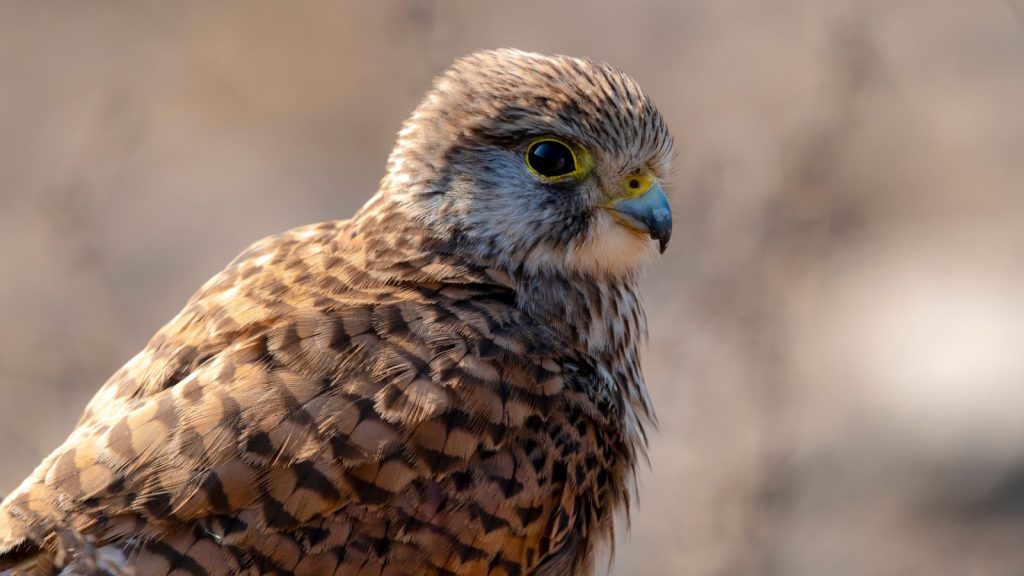
Often called the “windhover” due to its ability to hover in mid-air, the kestrel is a small but charismatic falcon. These colourful raptors are frequently spotted along roadsides, using their keen eyesight to spot small rodents in the grass below. Kestrels can see ultraviolet light, which helps them track vole urine trails. Despite their adaptability, kestrel populations have declined in recent years, likely due to changes in agricultural practices.
Hen Harrier
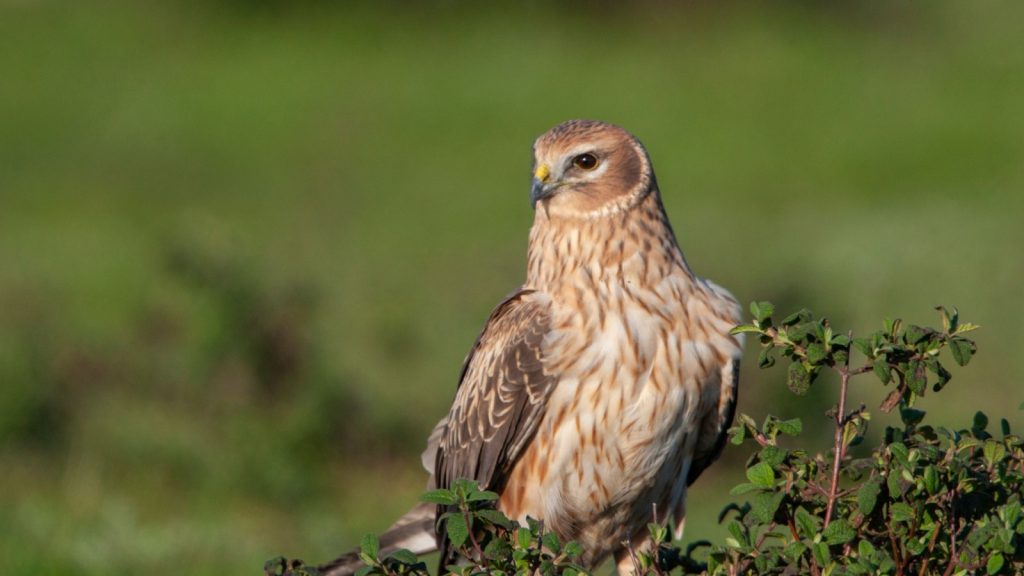
The hen harrier is a ground-nesting raptor known for its elegant flight and distinctive owl-like face. Males and females look strikingly different, with males sporting pale grey plumage and black wingtips. These birds perform spectacular aerial courtship displays known as “sky dancing.” Hen harriers are one of the most persecuted birds of prey in the UK, particularly in areas managed for grouse shooting.
Tawny Owl
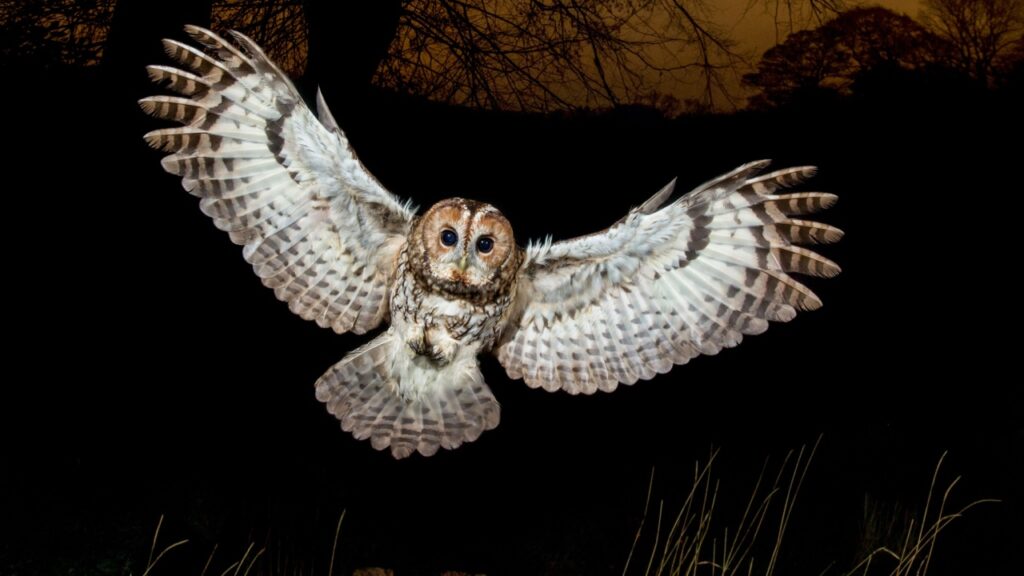
The tawny owl is Britain’s most common owl species, known for its famous “twit-twoo” call. These stocky, round-headed owls are strictly nocturnal and rarely seen during the day. Tawny owls are highly territorial and will fiercely defend their nesting sites from intruders. They have excellent hearing, with asymmetrical ear openings that allow them to pinpoint the exact location of prey in complete darkness.
Goshawk
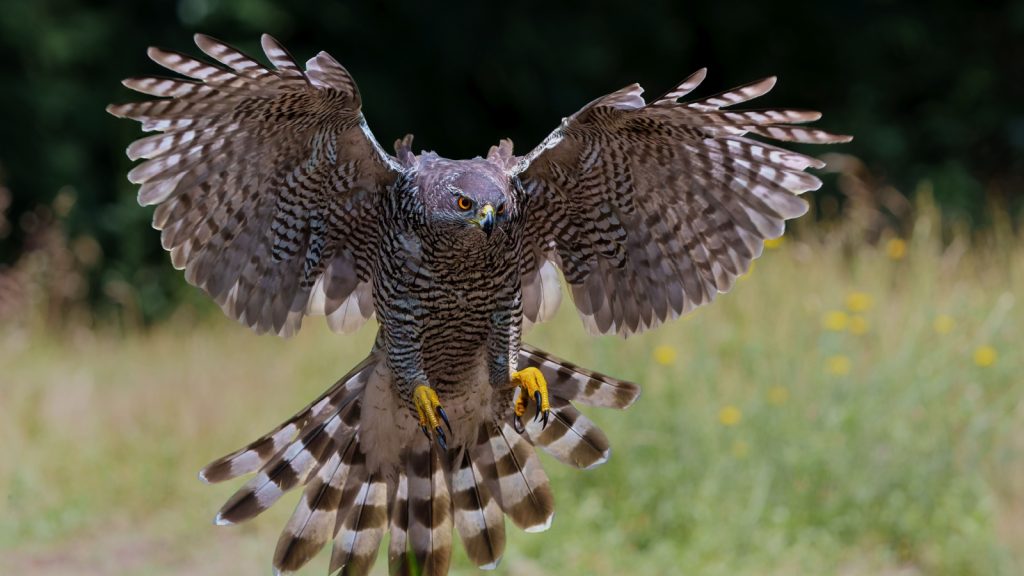
Often called the “phantom of the forest,” the goshawk is a powerful and elusive woodland predator. These large hawks have short, broad wings and long tails, allowing them to manoeuvre through trees with incredible agility. Goshawks are known for their fierce temperament and have been used in falconry for centuries. They’re making a comeback in British woodlands after years of persecution, though they remain relatively rare and secretive.
Osprey
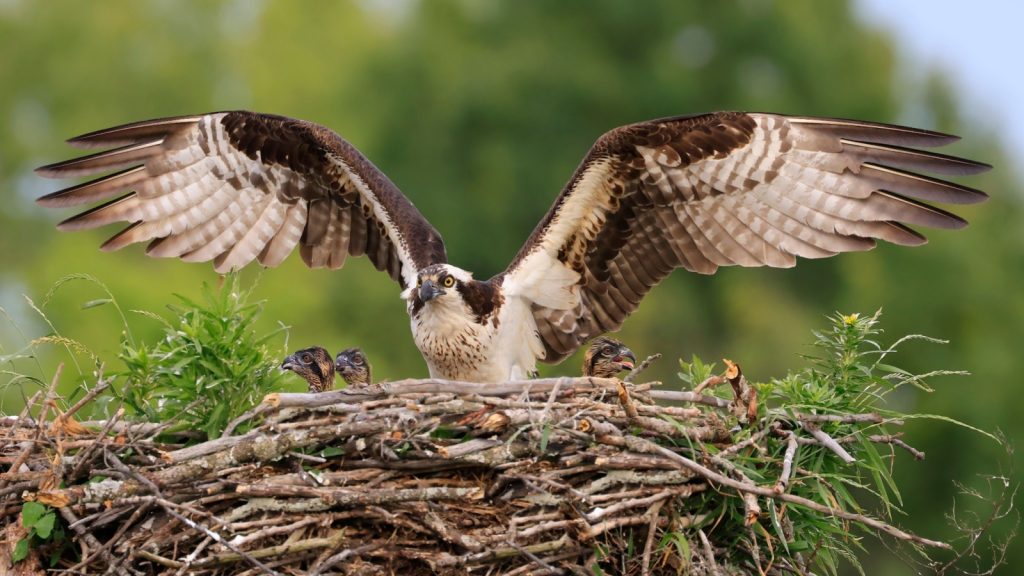
The osprey is a fish-eating specialist, with reversible outer toes and spiny footpads to help it grip slippery prey. These summer visitors to Britain are often seen plunge-diving into lakes and rivers to catch fish. Ospreys undertake impressive migrations, with some individuals travelling as far as West Africa for the winter. Their return to Britain each spring is eagerly anticipated by wildlife enthusiasts, with many nesting sites equipped with webcams for public viewing.
Short-Eared Owl
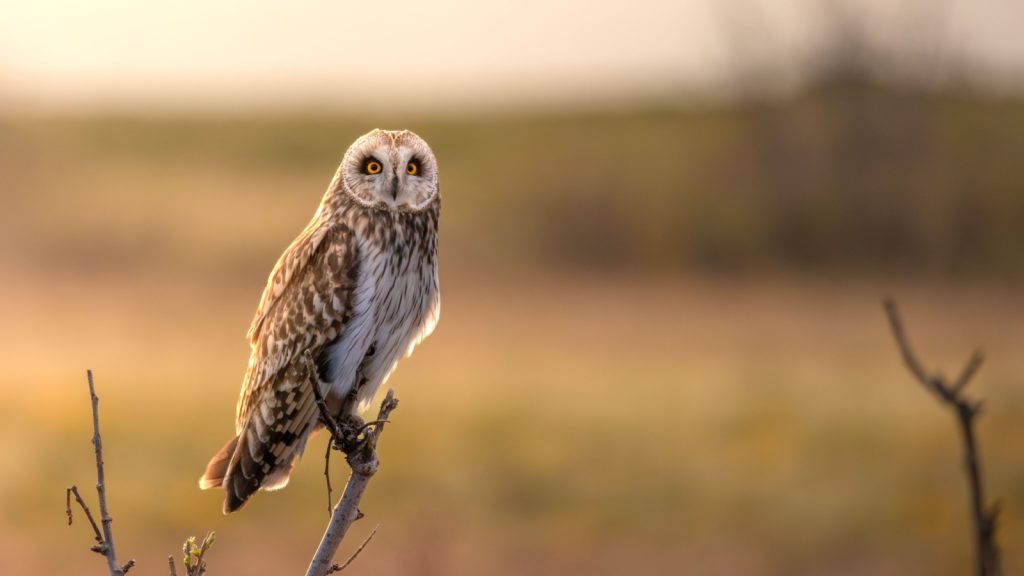
Unlike most owls, the short-eared owl is often active during the day, especially in winter. These ground-nesting raptors inhabit open moorlands, marshes, and coastal grasslands. Short-eared owls have excellent hearing and can locate prey under snow or vegetation. Their population in Britain fluctuates depending on the abundance of their primary prey, voles, with some years seeing influxes of continental birds.
Merlin
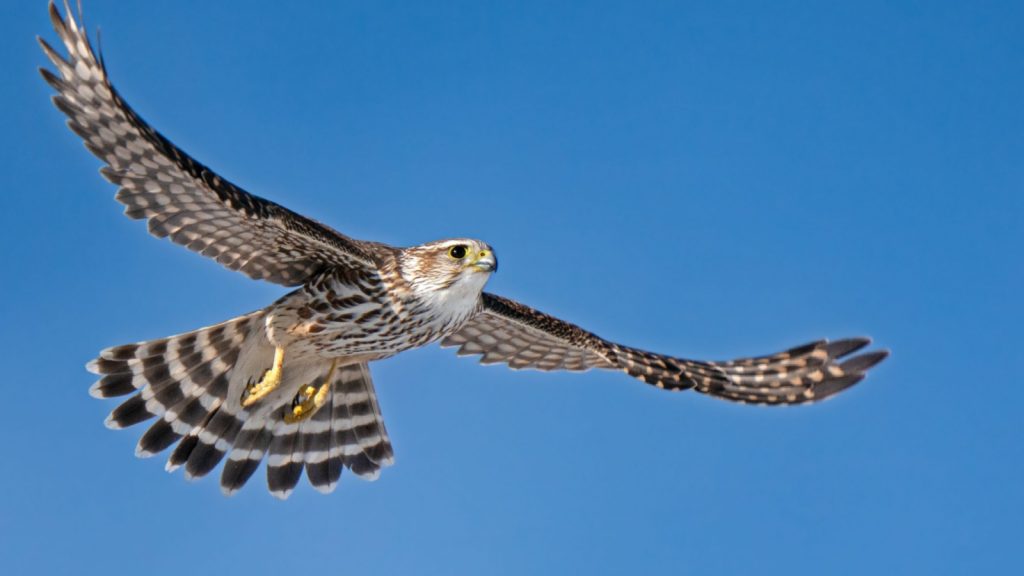
The merlin is Britain’s smallest falcon, but what it lacks in size it makes up for in speed and agility. These compact predators specialise in hunting small birds, often pursuing them in high-speed chases close to the ground. Merlins breed in upland areas but can be seen in lowland regions during winter. Despite their small size, merlins are fiercely territorial and will boldly chase off much larger birds of prey from their nesting areas.
White-Tailed Eagle
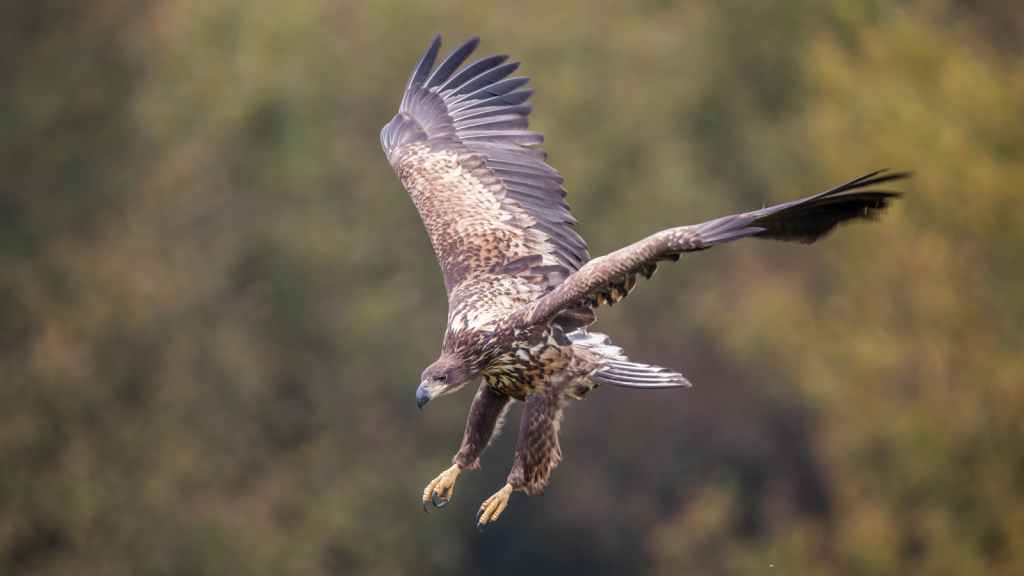
Also known as the sea eagle, the white-tailed eagle is Britain’s largest bird of prey. These enormous raptors were reintroduced to Scotland after becoming extinct in the early 20th century. With a wingspan of up to 2.4 metres, they’re an awe-inspiring sight along coastal areas and large bodies of water. White-tailed eagles are opportunistic hunters and scavengers, feeding on fish, waterfowl, and carrion, and have even been known to prey on other birds of prey.
Marsh Harrier
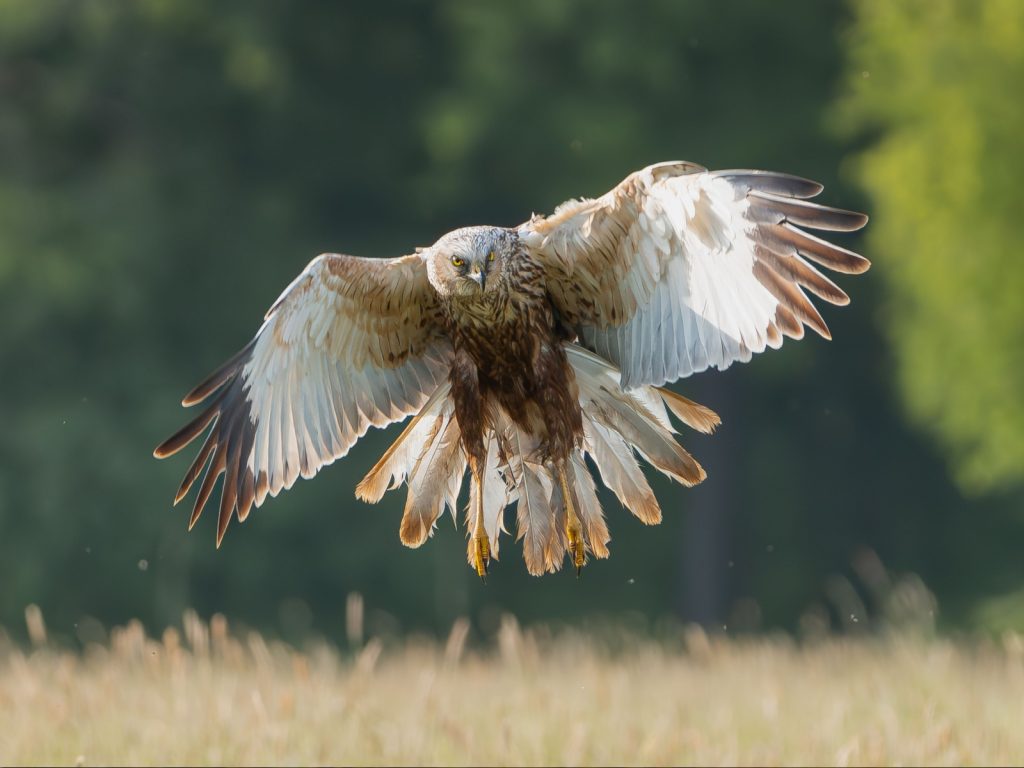
The marsh harrier is a reed-bed specialist, often seen gliding low over wetlands and farmland. These large raptors were once on the brink of extinction in Britain but have made a significant recovery. Male marsh harriers perform spectacular food passes to females during the breeding season, transferring prey in mid-air. Their diet is varied, including small mammals, birds, reptiles, and even large insects, making them important predators in wetland ecosystems.

